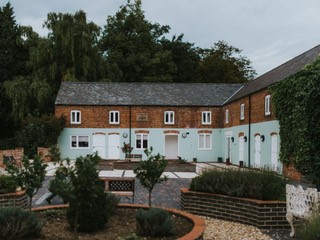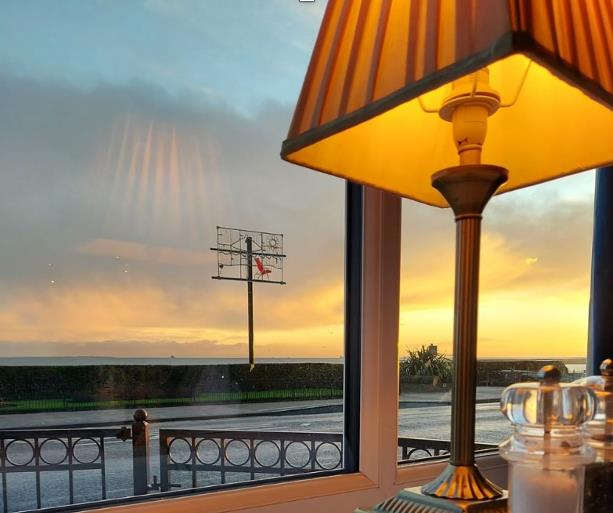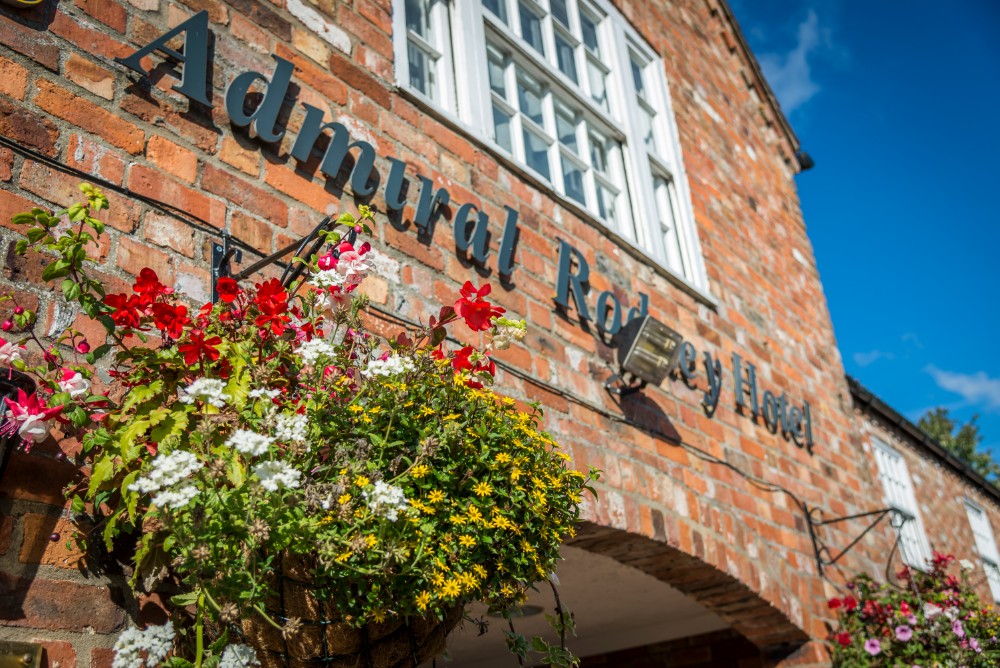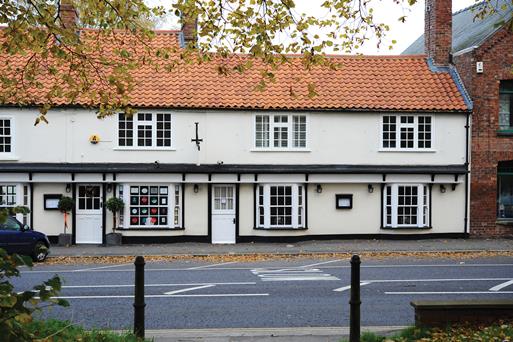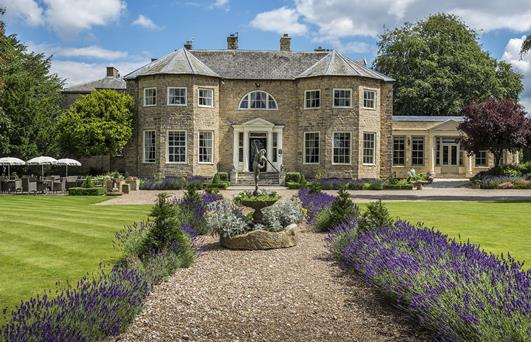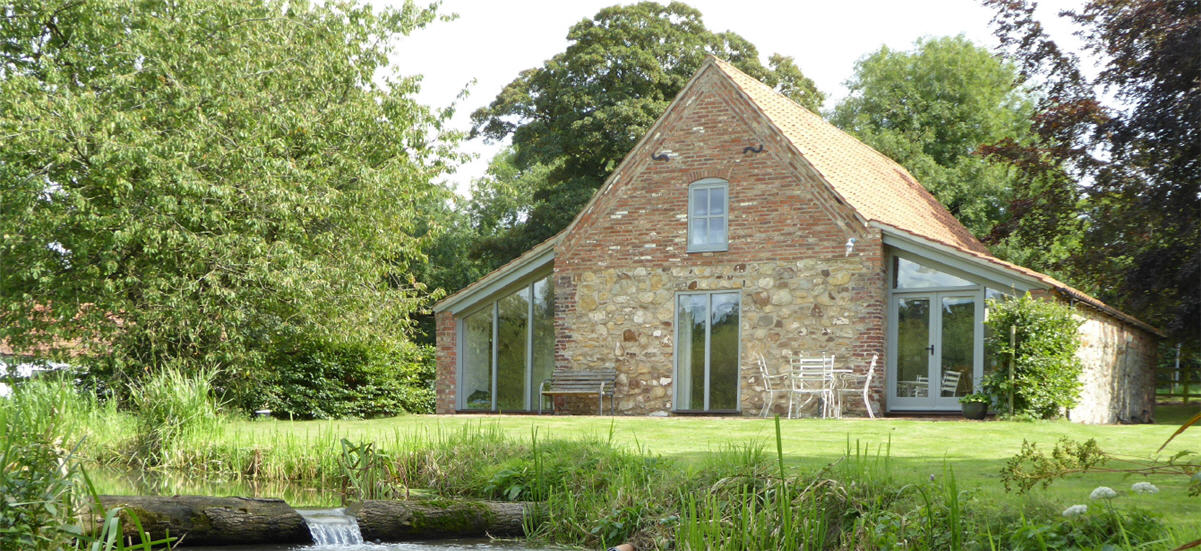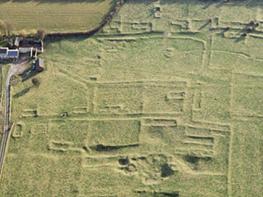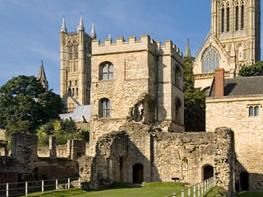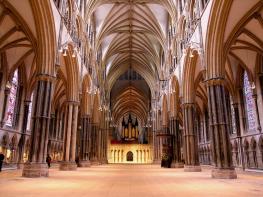Situated in picturesque Lincolnshire Wolds Village of Tealby with its vintage tearoom, community…
Churches of the Wolds

Explore two beautiful Lincolnshire villages through their contrasting churches on this quiet circular ramble.
4.25 miles (6.8kms)
About the walk
The villages of the Lincolnshire Wolds have many interesting and attractive old churches, and one of the most remarkable is the 'Old Church' of All Saints, situated on a remote hilltop above Walesby. It's 'old' in that it was replaced by a newer version in 1913, and in the succeeding years became dilapidated and rundown. But it was never deconsecrated and, in the early 1930s, a local rambling club began making an annual pilgrimage to the church. Twenty years later the Grimsby and District Wayfarers' Association dedicated the East Window of the Lady Chapel to 'lovers of the countryside', with a stained-glass depiction of walkers and cyclists. Local ramblers still hold an annual service on Trinity Sunday at what is now referred to as 'the Ramblers' Church', and most appropriately the Viking Way long-distance footpath passes through the churchyard.
Unchanged since Norman times
Although repairs have been carried out over the last 20 years to protect All Saints from further weathering and decay, it retains its simple medieval character, a splendid example of what's known as the Norman-Transitional period. Several old, boxed pews remain, while another interesting feature is the old stairway behind the pulpit, which leads to the well-preserved rood loft – the name for the gallery above the rood screen which separates the nave (the main part of the church where the congregation sit) from the chancel (where the clergy and choir sit).
From the church, the glorious views can include the towers of Lincoln Cathedral on a clear day. A Roman villa was unearthed to the east of the church, and a simple Saxon building almost certainly pre-dates the present church (built mainly between the 12th and 15th centuries). Its admirers include John Betjeman, who described All Saints as 'an exceptionally attractive church, worth bicycling 12 miles against the wind to see'.
Down the hill in the village of Walesby, St Mary's is a neat and simple affair by comparison, an example of the Arts and Crafts Movement. The then vicar campaigned laboriously for 30 years to get a new church built in the village, only to drop down dead on the very day that work finally started.
The Tennyson connection
The charming village of Tealby is associated with Alfred, Lord Tennyson, Lincolnshire's very own Poet Laureate. His brother, Charles, was rector at the church for a while, and the impressive 1930s Tennyson D'Eyncourt Memorial Hall is named after another relation.
The parish church of All Saints in Tealby dates from around 1100. It was extensively rebuilt for the Tennyson d'Eyncourts in the 1870s as a shrine to the family – notice the invented heraldry and imitation medieval tombs. The church also houses an impressive collection of more than 100 tapestry 'kneelers' embroidered by local women and depicting people and places from around the village.
Walk directions
With your back to the Tennyson d'Eyncourt Memorial Hall, walk down Front Street as far as B Leaning & Sons, a butcher and maker of traditional Lincolnshire sausages established in 1860. Turn right into Church Lane, which soon becomes a walkway. At the top, turn left and cross over Rasen Road to follow the public footpath that runs between houses on the opposite side. As far as Walesby you will be following the Norse helmet waymarks of the Viking Way.
Pass through a gate and cross open pasture, aiming for another gate in the far bottom corner. Go through this and along the path ahead, ignoring a footbridge to the left. Walk up the open hillside ahead to reach the corner of Bedlam Plantation which is above Castle Farm.
Turn right and go through a gate for a fenced path beside the woods. At the far end head diagonally left down an undulating grassy field to pass below Risby Manor Farm. Cross the lane leading up to the farmhouse and continue ahead, crossing a deep valley and climbing steeply towards Walesby Top Wood. Pass through gates and keep straight ahead across a field of crops to reach All Saints Church.
Walk through the churchyard and continue along the Viking Way as it drops down a wide track into the village. When you reach Rasen Road at the bottom go straight on, past the 'new' parish church of St Mary until you reach the junction with Catskin Lane.
Turn left and walk along Catskin Lane for 0.75 miles (1.2km). Just past a right-hand curve, turn left at the entrance of a farm drive and go over a cattle grid. This is in fact a public bridleway that leads back up to the hilltop, but you should turn right in a few paces and join a footpath across rough pasture, initially parallel with the road. Stay on this path as it runs along the left-hand side of a field to arrive at the drive to Castle Farm.
The public footpath now continues almost due east across the vast sloping field beyond. When you reach the far side of the field, pass through a gate and drop down to cross a wooden footbridge. Turn right on the far side of the bridge to rejoin the earlier route back into Tealby, this time turning left up Rasen Road to visit All Saints Church. Drop down through the churchyard and follow Beck Hill to the memorial hall, then turn right along Front Street to return to the start of the walk.
Additional information
Field paths, some steep and others muddy
Undulating chalk hills, deep valleys and woodland
On lead at all times in fields of rare breed sheep and deer
OS Explorer 282 Lincolnshire Wolds North
Kerbside on Front Street, Tealby
None on route (nearest in Market Rasen)
WALKING IN SAFETY
Read our tips to look after yourself and the environment when following this walk.
Find out more
Also in the area
About the area
Discover Lincolnshire
Much of the fenland around the Wash has been drained of its marshes and reclaimed as highly productive farmland. Further north, the coastline, with its sandy beaches, has been developed to accommodate the holiday industry, with caravans, campsites and the usual seaside paraphernalia. The main resorts are Skegness, Mablethorpe, Cleethorpes and Ingoldmells. Inland, the chalky margin of the Lincolnshire Wolds offers an undulating landscape of hills and valleys, designated as an Area of Outstanding Natural Beauty.
Lincoln, the county town, is dominated by its magnificent cathedral. Most of interest in the city is in the uphill area, Steep Hill, ascending from the River Witham; the Bailgate spanned by the Newport Arch, and the Minster Yard with its medieval and Georgian architecture. Boston, on the banks of Witham, was England’s second biggest seaport in the 13th and 14th centuries, when the wool trade was at its height. There are market towns all over the county still holding weekly markets, including Barton-upon-Humber, Boston, Bourne, Brigg, Crowland, Gainsborough, Grantham, Great Grimsby, Holbeach, Horncastle, Long Sutton, Louth, Market Rasen, Scunthorpe, Sleaford, Spalding (the centre of the flower industry), and the elegant Edwardian spa resort of Woodhall Spa.
Nearby stays
Restaurants and Pubs
Nearby experiences
Recommended things to do
Why choose Rated Trips?
Your trusted guide to rated places across the UK
The best coverage
Discover more than 15,000 professionally rated places to stay, eat and visit from across the UK and Ireland.
Quality assured
Choose a place to stay safe in the knowledge that it has been expertly assessed by trained assessors.
Plan your next trip
Search by location or the type of place you're visiting to find your next ideal holiday experience.
Travel inspiration
Read our articles, city guides and recommended things to do for inspiration. We're here to help you explore the UK.





